For a stable and silky smooth buttercream that pipes like a dream, you need to try this Italian meringue buttercream recipe (IMBC). It’s deliciously rich from the butter but still light and airy from the meringue. It’s not too sweet, and you can flavor it in so many ways!
While the sugar syrup may seem intimidating, this IMBC recipe is worth making. It’s such a smooth and creamy frosting that will melt in your mouth. It’s super versatile and is perfect for frosting cakes, cupcakes, piping roses, and other decorations.
Did you know Italian meringue (same recipe without the butter) is incredible on tarts and baked Alaska! So, if you can make Italian meringue, you’re only a step away from this delicious buttercream!
What You Need to Make This Recipe
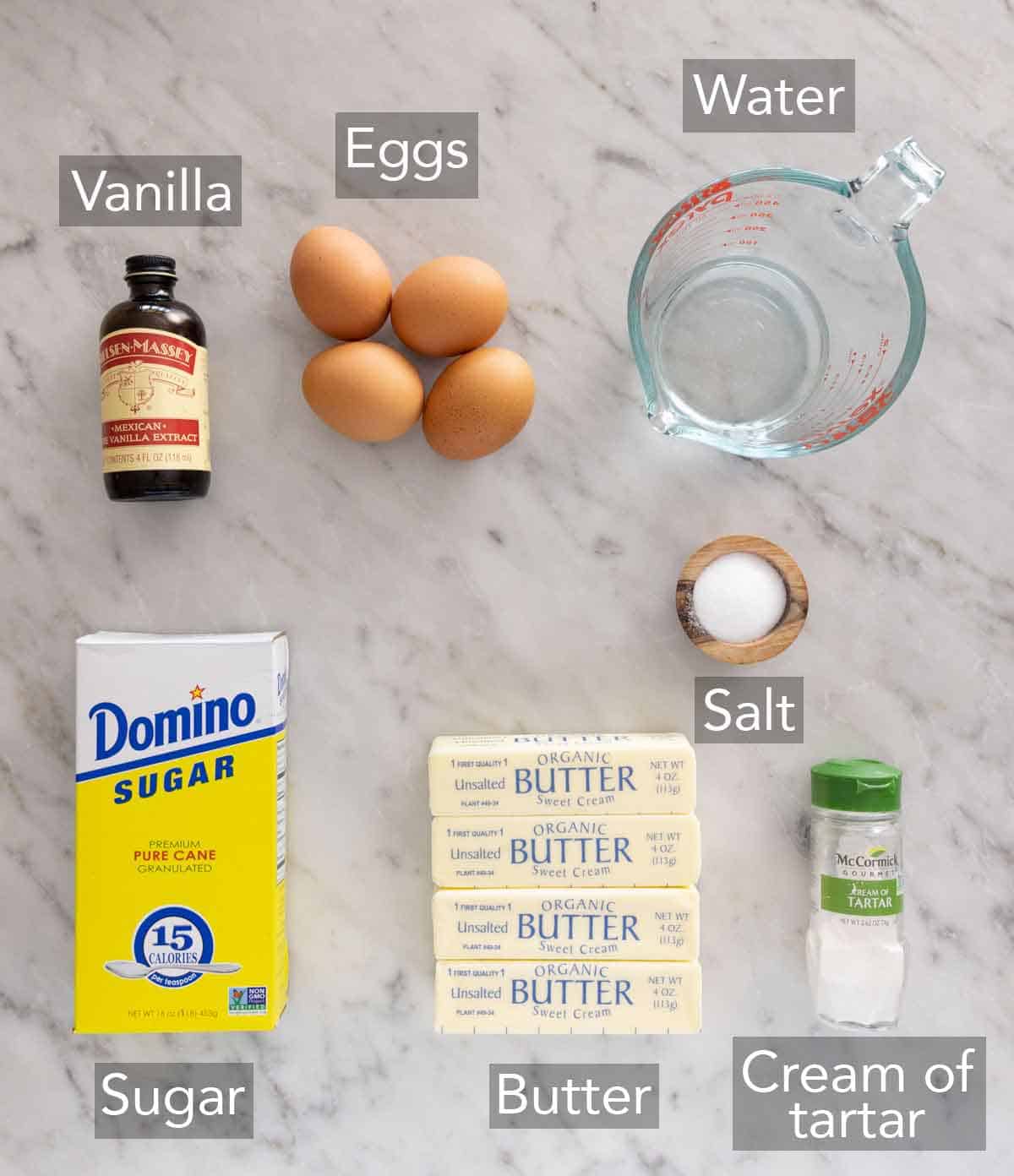
Eggs — I highly recommend using fresh eggs instead of carton egg whites for this buttercream recipe, as it whips up much better. Save your egg yolks for another recipe, such as my easy lemon curd recipe!
Sugar — make sure you use regular granulated sugar for the sugar syrup. It also has to reach 240F to ensure that the sugar is stable enough to be whipped into the meringue buttercream.
Butter — Make sure to buy unsalted butter, not salted. The butter must be at room temperature as you’ll end up with lumps of butter that you cannot whip out if the butter is cold.
Cream of tartar — Cream of tartar helps stiffen the egg whites and gives the egg whites more volume as it whips up. If you do not have any, you can try to substitute an equal amount of white vinegar or lemon juice. However, if you would like to omit it entirely, I’ve done so, and it’s turned out fine as the sugar syrup helps stabilize the Italian buttercream as well.
How to Make Italian Buttercream
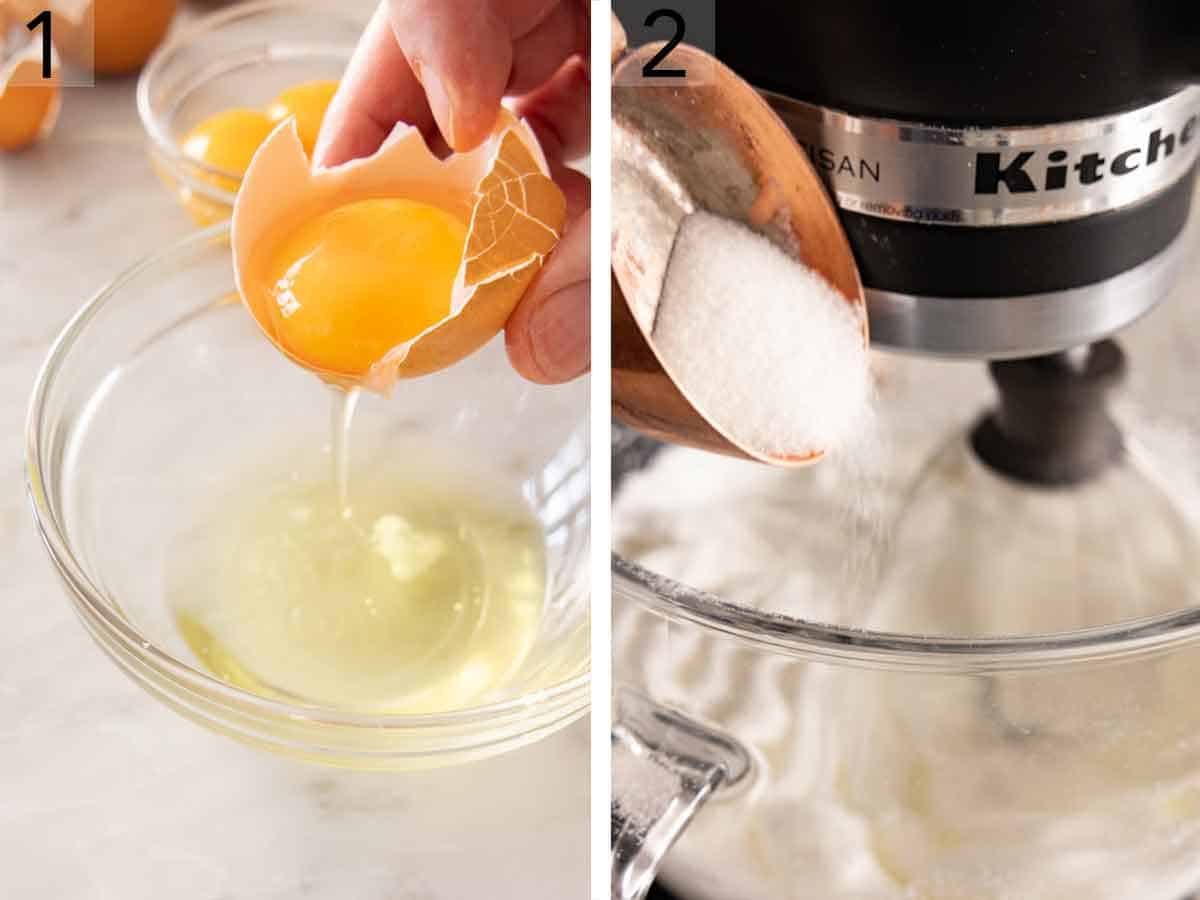
1. Separate the egg yolks from the egg whites.
2. Beat the egg whites, salt, and cream of tartar in the mixing bowl of a stand mixer, then slowly add in ⅓ cup of sugar and continue beating until soft peaks form.
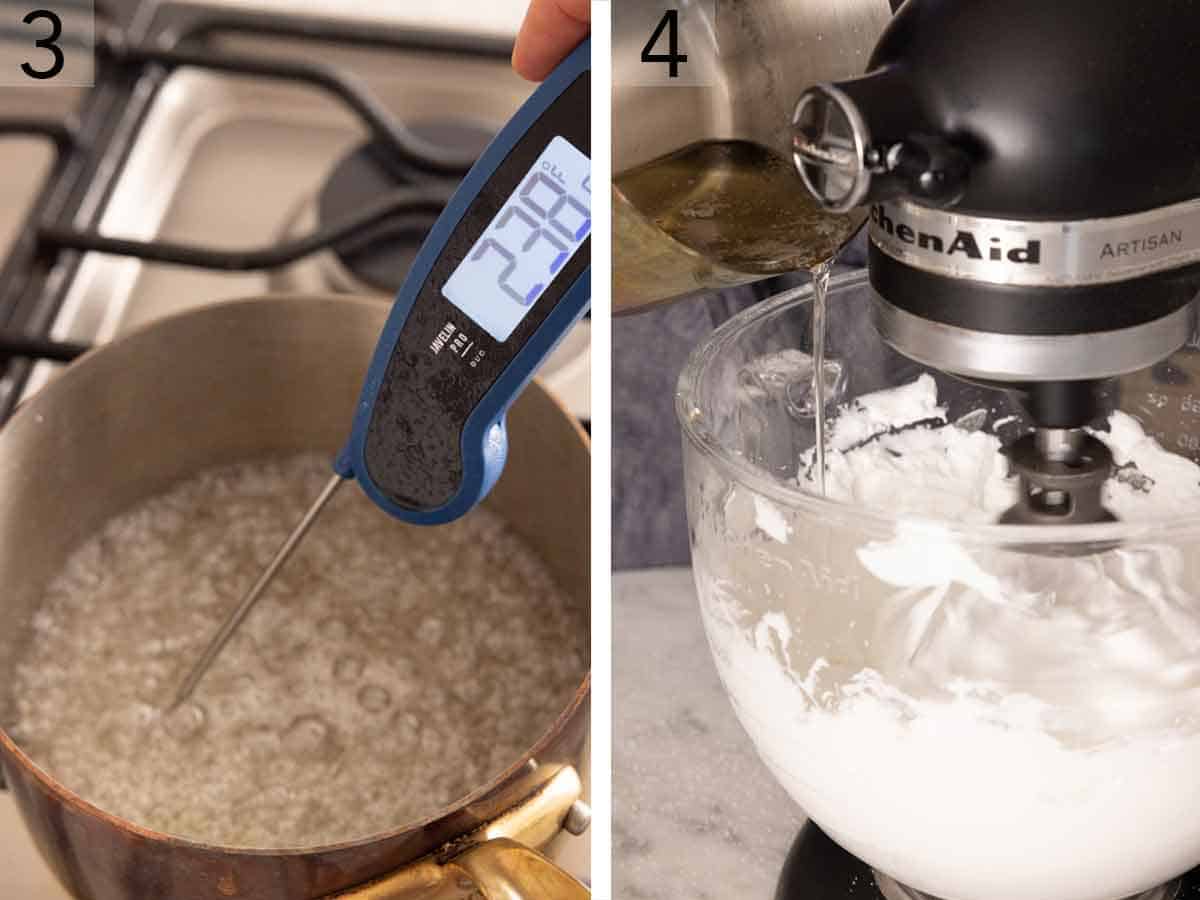
3. While the eggs are getting whipped, add the remaining sugar and ⅓ cup of water into a medium pot over medium-low heat. Stir until sugar melts and becomes clear and maintain at medium-high heat until temperature reads 235-240F.
4. Drizzle the sugar into the mixer immediately. At this point, the meringue should be at the soft peak stage.
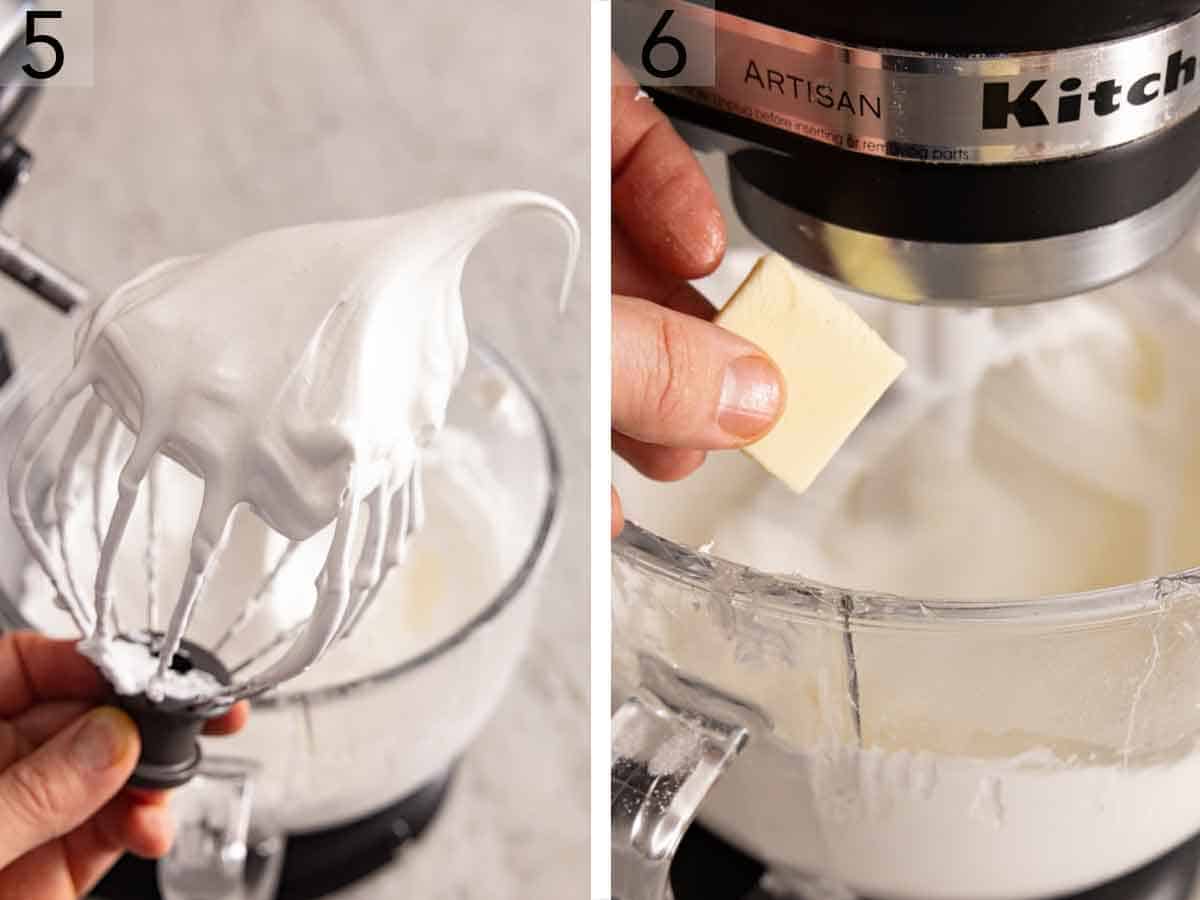
5. Run the mixer until the meringue is cool.
6. Switch to a paddle attachment and add room temperature butter into the running mixer one tablespoon piece at a time. Add the salt and vanilla if using and beat until butter is combined and the mixture has reached a silky consistency.
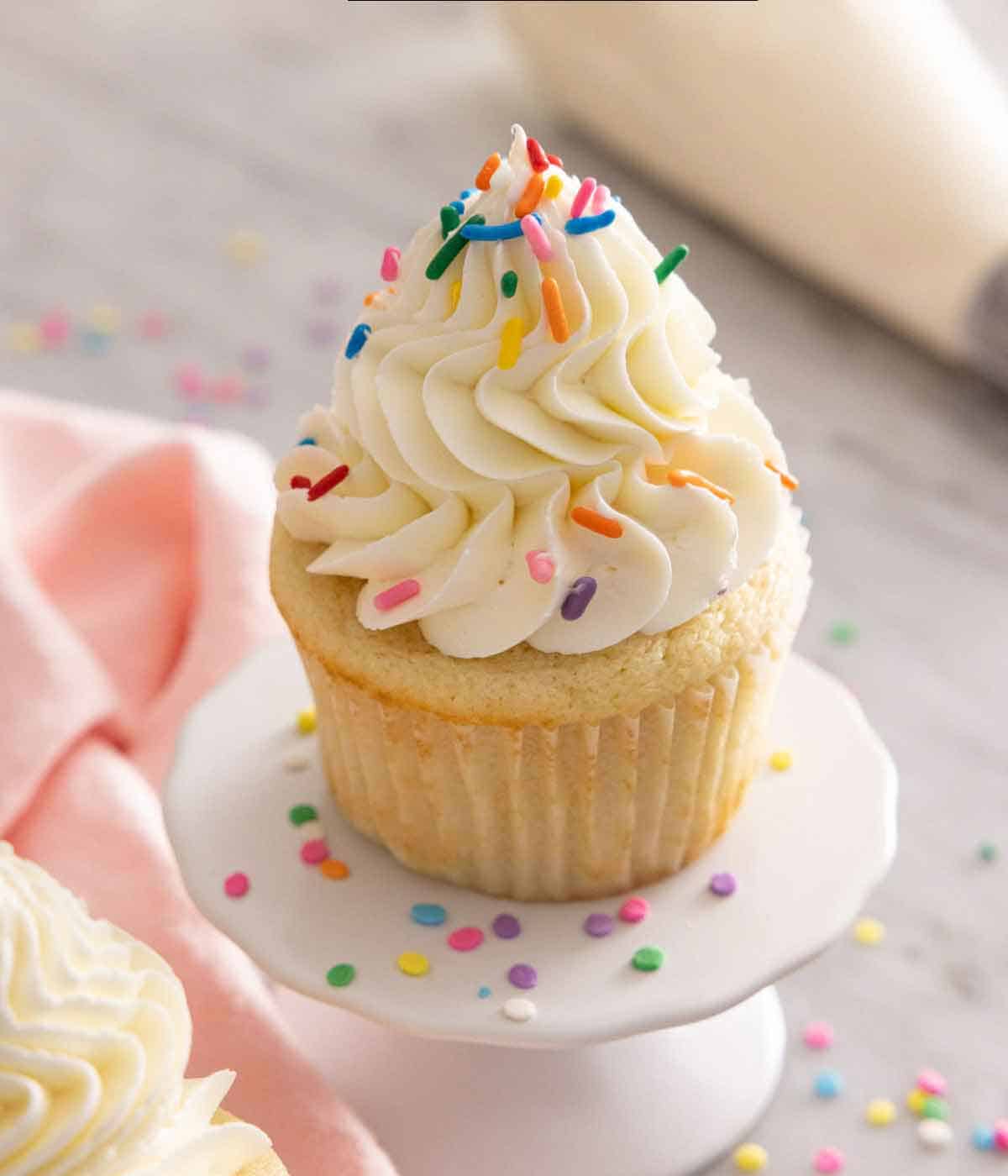
Pro Tips for Making This Recipe
- Eggs are easier to separate when cold, but egg whites whip up easier when closer to room temperature. I recommend separating them in advance if you have the time. In addition, allowing the egg whites to sit gives them a chance to relax, which improves their elasticity during the whipping process.
- It is essential to have a clean and dry bowl for whipping the egg whites. The egg whites cannot contain any egg yolk whatsoever. If the bowl is not completely clean or yolk-free, it prevents your meringue from setting up.
- If your equipment or bowl has grease on it, wipe down everything with lemon juice or vinegar.
- Monitor the temperature of your sugar syrup closely, you don’t want it to get too hot.
- Make sure you are using a medium pot as the sugar mixture will bubble as it heats up and will overflow out of a small pot.
- If you loved how my IMBC looked in my brown butter orchid cake, check out my how to decorate a cake post for lots of helpful tips and a full how-to video on decorating!
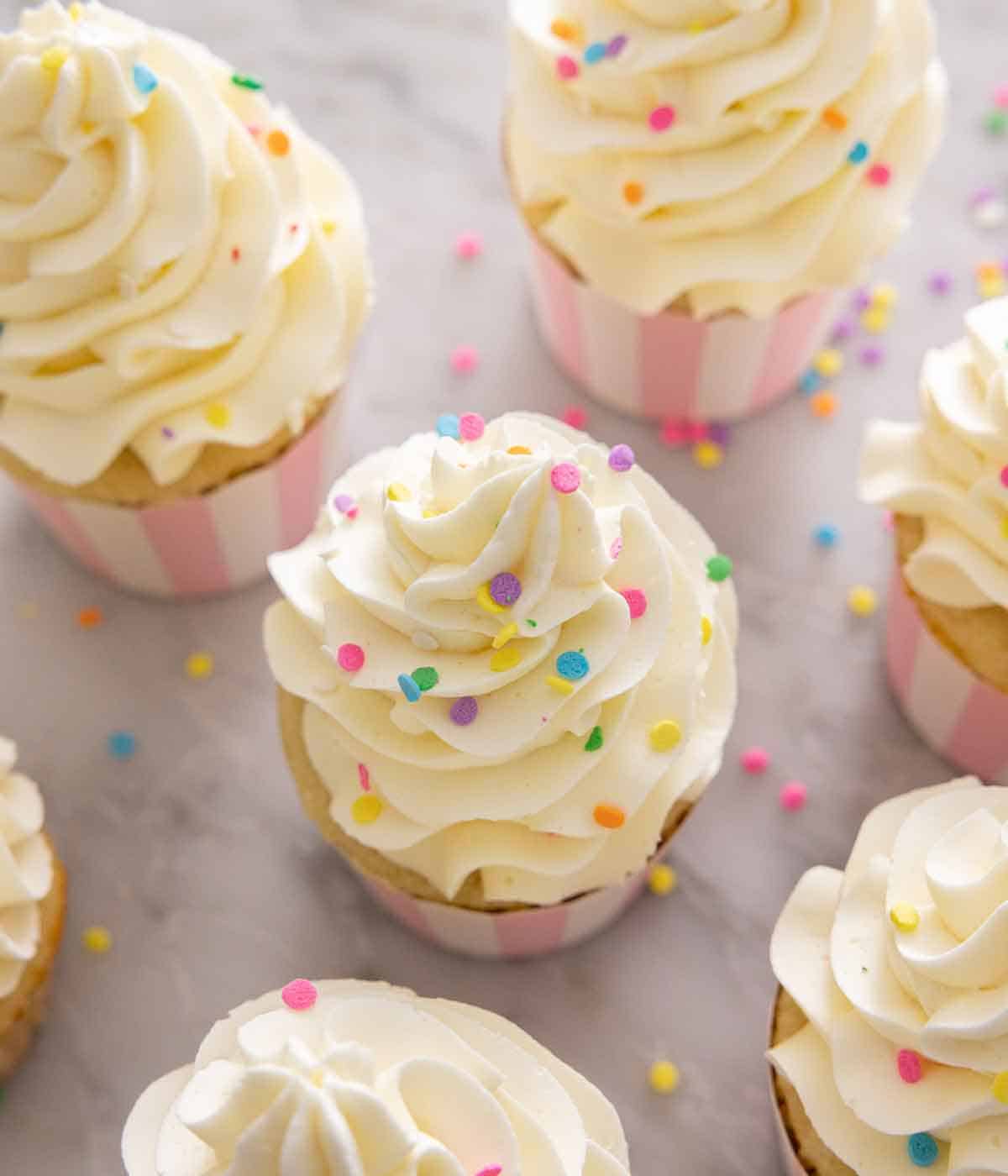
Frequently Asked Questions
How should my buttercream look?
After adding the 240F sugar syrup to the mixture, your meringue will look very silky, white, feel marshmallowy, and not warm when you touch it. As soon as you add the room temperature butter into the mixer, the consistency of the buttercream will change, and it will deflate a bit. Don’t worry, that’s fine! Just keep adding all of the butter in and whip. If it’s still soupy, you can pop it in the fridge or freezer to cool down for 10 minutes, then keep whipping, and it should be fine!
How does this taste?
Italian buttercream is less sweet but more buttery compared to American buttercream frosting! You can always add more sugar syrup to your meringue to sweeten it a bit further.
What flavoring agents can I add?
I love flavoring my buttercreams with a high-quality vanilla extract, but don’t feel limited to vanilla. Orange blossom water, rose water, fruit reductions (make sure they’re strained and cooled before adding), other extracts, and chocolate (melted and cooled) make for great flavoring agents. When adding flavorings to this Italian buttercream recipe, I suggest doing this as the very last step.
Can I make this Italian buttercream without a candy thermometer?
While it’s much easier to use a thermometer when making Italian meringue, you can make it without a thermometer. You can use a glass of cold water to check if your sugar’s temperature is hot enough. This is called a soft ball test.
When the sugar is approaching the softball stage, you’ll notice the bubbles start getting bigger and bubbling more slowly. Use a spoon to drop some of the hot sugar into the glass of cold water. If the sugar dissolves, the mixture is not hot enough. If the sugar forms a hard ball in the water, the mixture is too hot. If the sugar forms a soft ball that feels like sap in your fingers, it’s ready to be added to the buttercream!
What’s the difference between buttercream and Italian meringue buttercream?
Italian buttercream is meringue-based and very light, creamy, and less sweet than American buttercream. American buttercream is sweeter but has the advantage of being quick, easy to make, and sturdy.
Can I make this ahead of time?
You can! This Italian buttercream lasts a week in the fridge. You can even freeze it for up to 2 months. Due to the butter in the buttercream, you will need to bring it to room temperature and re-whip it before using it.
How do I add color to Italian buttercream?
If you just add food coloring to meringue-based buttercream, the color will not be as vibrant. A little trick I picked up is taking a tablespoon of the buttercream and microwaving it in a little bowl with a drop or two of food coloring for 8 seconds. Then, mix this colored buttercream into the rest of the buttercream. The color will be much more saturated than adding the food coloring directly into the buttercream. I usually use gel food colorings to color my buttercream; they are more concentrated than the liquid ones you get at the supermarket.
What are the three types of buttercream?
The three most common types of buttercream are Italian meringue buttercream, Swiss meringue buttercream and American buttercream. French buttercream, which uses egg yolks for a custard-like frosting, and German buttercream are also delicious options I would urge you to try out.
If you’ve tried this Italian Meringue Buttercream recipe, then don’t forget to rate the recipe and let me know how you got on in the comments below, I love hearing from you!

How to Make Italian Buttercream
Video
Equipment
- Mixer
- Medium pot
Ingredients
- 4 egg whites large, room temperature
- 1⅓ cups granulated sugar (267g)
- ¼ teaspoon salt optional
- 16 ounces unsalted butter (454g) room temperature cut into 1-inch pieces
- 1 teaspoon pure vanilla extract optional (4.9mL)
- ¼ teaspoon cream of tartar (0.84g)
- ⅓ cup water (79mL)
Instructions
- Beat the egg whites, salt, and cream of tartar, slowly add in ⅓ cup of sugar and continue beating until soft peaks form.
- While the eggs are getting whipped add the remaining sugar and ⅓ cup of water into a medium pot and place on medium-low heat.
- Stir until sugar melts and becomes clear.
- Maintain at medium-high heat until temperature reads 235-240F.
- Drizzle the sugar into the mixer immediately. At this point the meringue should be at the soft peak stage.
- Run mixer until meringue is cool/tepid.
- Switch to a paddle attachment. Add room temperature butter into running mixer one tablespoon piece at a time.
- Add the salt and vanilla if using.
- Beat until butter is combined and mixture has reached a silky consistency.
Notes
- Eggs are easier to separate when cold, but egg whites whip up easier when closer to room temperature. I recommend separating them in advance if you have the time. In addition, allowing the egg whites to sit gives them a chance to relax, which improves their elasticity during the whipping process.
- It is essential to have a clean and dry bowl for whipping the egg whites. The egg whites cannot contain any egg yolk whatsoever. If the bowl is not completely clean or yolk-free, it prevents your meringue from setting up.
- If your equipment or bowl has grease on it, wipe down everything with lemon juice or vinegar.
- Monitor the temperature of your sugar syrup closely, you don’t want it to get too hot.
- Make sure you are using a medium pot as the sugar mixture will bubble as it heats up and will overflow out of a small pot.
- If you loved how my IMBC looked in my brown butter orchid cake, check out my how to decorate a cake post for lots of helpful tips and a full how-to video on decorating!



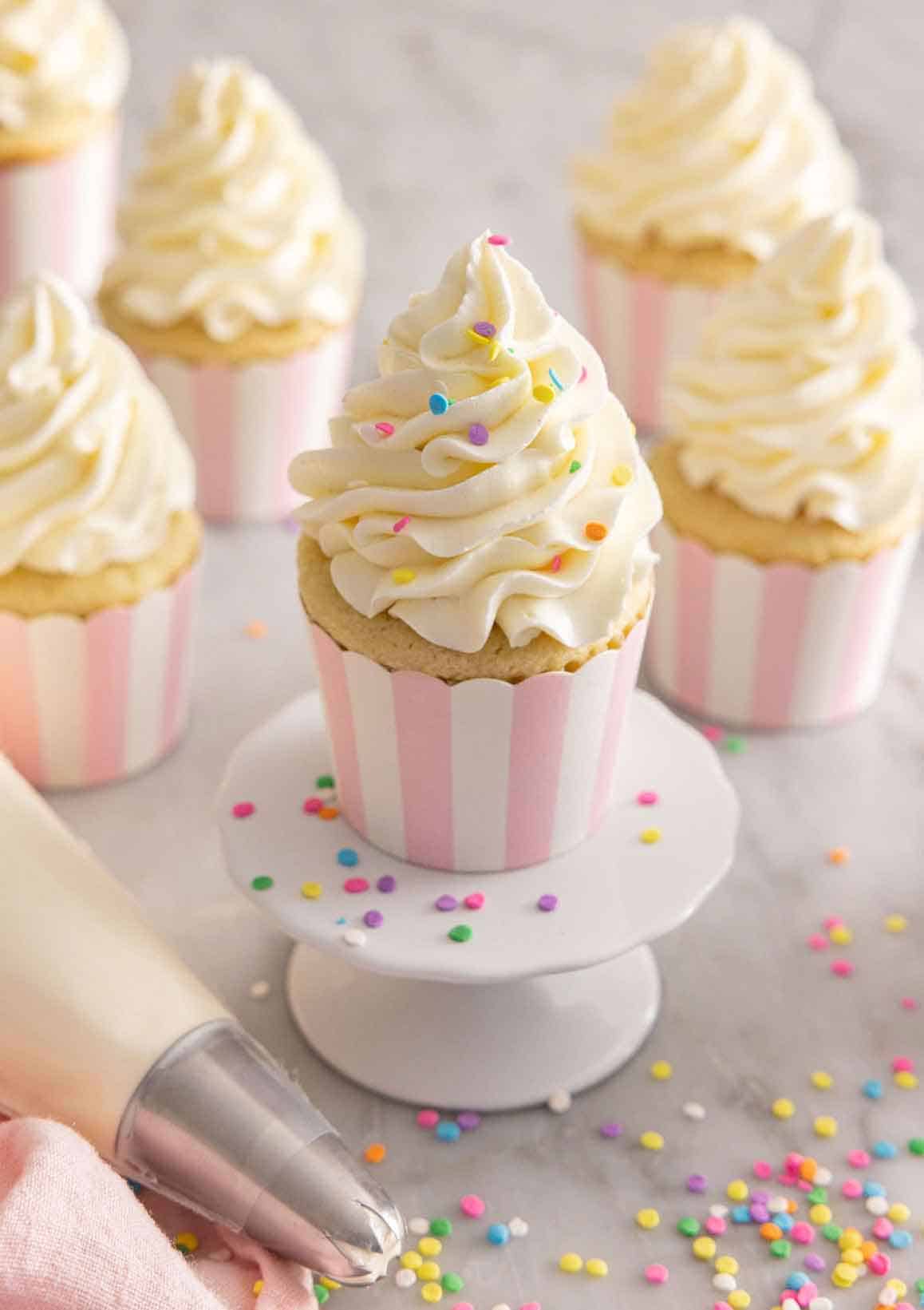
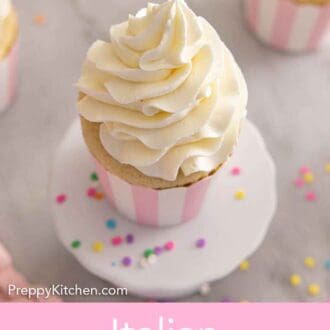
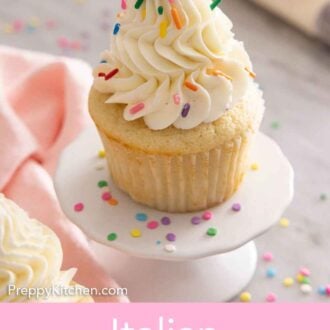
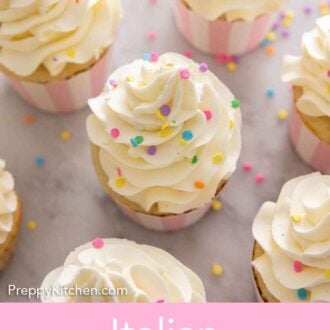
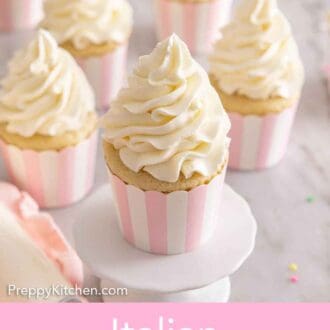
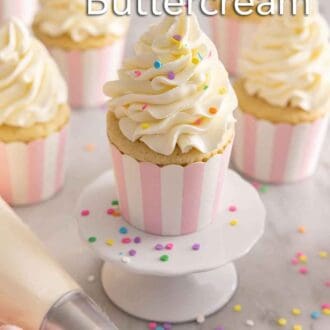
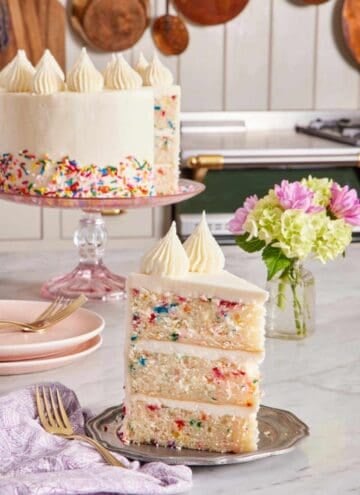
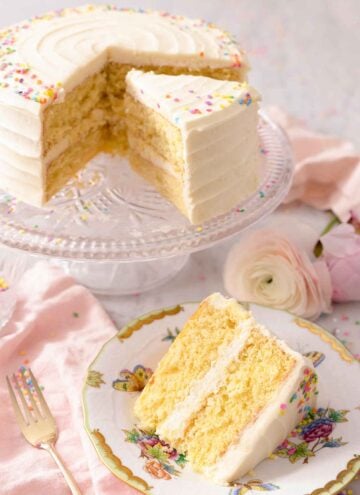
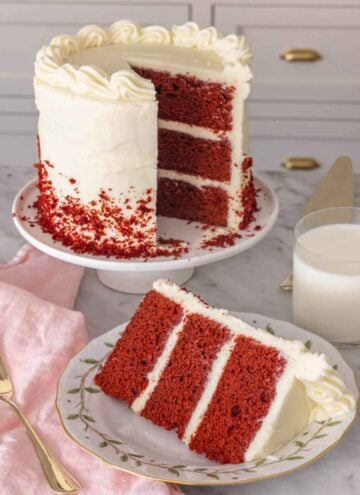
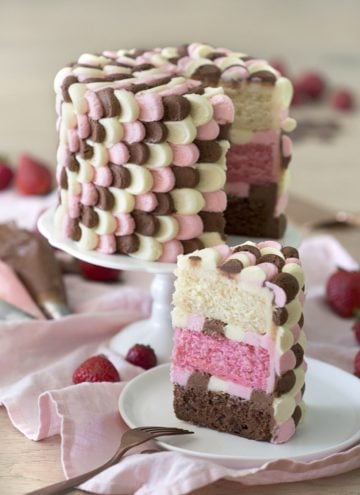
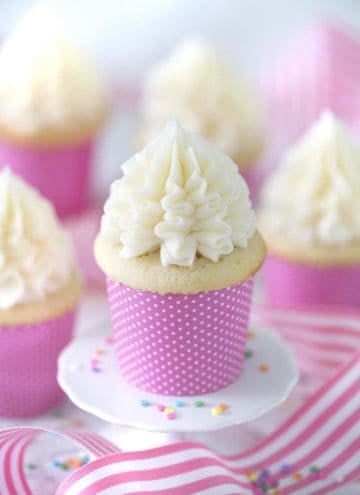

Karen says
This recipe is my go to. The whole family loves i, including those that don’t normally like frosting. It’s a little fussy but not beyond even a novice baker. Give it a try.
Cindy says
I have made Rose Berenbaum’s neoclassic buttercream many times but have been intimidated about making Italian Buttercream. So afraid I wouldn’t get it right and have read that is so tricky. Your recipe was so well written – I succeeded first time and it is BEAUTIFUL and tasty. Thank you!!!
Bea says
I made this yesterday & thought it was divine! Put it in the fridge, let it come to room temp & then beat it but something happened, it’s a greasy mess today. It was my first time making this usually make SMBC. What do you think I did wrong? I followed everything you said.HELP!
Leah says
How many cups of frosting does this recipe make? Thanks!
Sally says
Question,
How do you color this frosting?
Does it need to be an oil base coloring
Dennis says
The most professional video on cooking I’ve seen. The fine details and tips are the things that really can make a difference in baking especially. Keep maintaining the high quality of the videos you produce.
John Kanell says
Thank you so much Dennis!
tarun says
this is so good I can not wait to try this